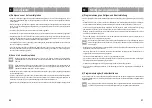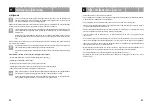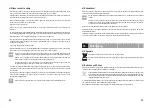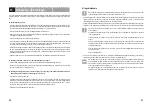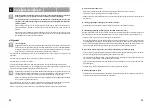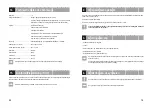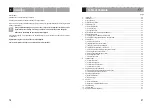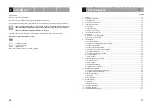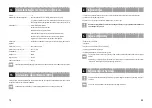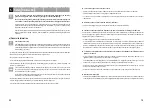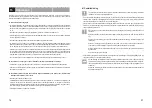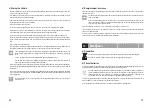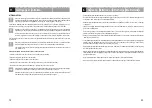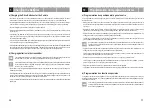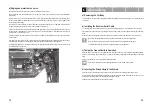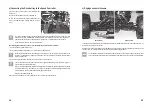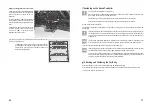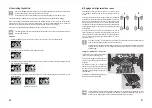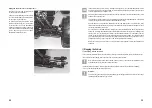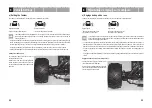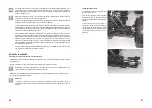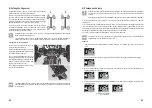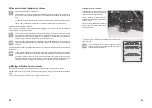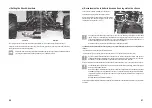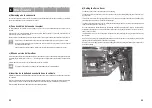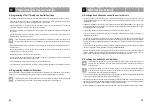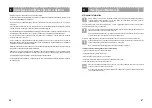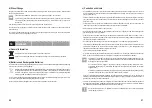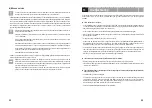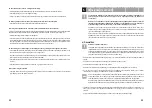
70
d) Réglage du protecteur de servo
La direction du véhicule est conçue sous forme de direction à fusées d’essieu.
Le pivotement du levier de commande du servo (A) agit sur un bras (C) du protecteur de servo via la timonerie de
direction (B).
Le protecteur du servo se compose de deux leviers (C et D) disposés perpendiculairement l’un par rapport à l’autre,
qui ne sont pas rigidement reliés entre eux. Un ressort leur permet de se déplacer l’un vers l’autre au même niveau
que la timonerie de direction.
Le deuxième levier du protecteur de servo (D) déplace la plaque de direction (E) en aluminium et influence ainsi
l’angle de braquage des roues avant via les deux biellettes de direction (F).
Si des chocs importants sont absorbés par le mécanisme de direction via les roues pendant la conduite, ceux-ci ne
sont pas transmis directement au servo de direction, mais ils sont amortis grâce à l’articulation à ressort des deux
leviers (C et D) du protecteur de servo.
L’effet du protecteur de servo se règle au moyen d’un écrou moleté (G) en modifiant la force de serrage exercée sur
les deux leviers.
Si le réglage est trop souple, les chocs légers contre la roue peuvent tordre les deux bras de la protection de servo,
influençant ainsi la précision de la direction et l’alignement durant la conduite de manière négative.
Un réglage trop rigide peut, en revanche, endommager l’engrenage servo étant donné que les chocs contre les roues
sont transmis sans filtre au servo.
A
C
B
E
D
F
G
35
8. Commissioning
a) Removing the Car Body
The vehicle body is secured with holding clips which must be pulled out from the retaining pins. The car body can then
be lifted off.
b) Installing the Receiver Aerial Cable
The aerial cable for the 2.4 GHz receiver is very short. A matching aerial tube is in the vehicle’s scope of delivery.
If the aerial cable of the vehicle is not yet plugged into the holder, guide it carefully upwards through the holder from
below.
Push the aerial cable through the aerial tube and plug the aerial tube into the attachment mount on the vehicle.
Make sure that the aerial cable does not protrude into the drive or touch the cardan shaft.
Never shorten the aerial cable! Never coil the aerial cable! This greatly reduces the range!
To achieve the best range, the vehicle’s receiver aerial must point straight up.
c) Taking the Transmitter into Operation
Open the battery compartment on the transmitter and insert new batteries or fully charged rechargeable batteries.
Observe correct polarity (plus/+ and minus/-), see label on the battery compartment. Close the battery compartment
again.
Switch on the transmitter. Check the functions at the transmitter.
Observe the separately enclosed operating instructions for the remote control system.
d) Inserting the Drive battery in the Vehicle
Open the two hook and loop tapes of the battery holder and place the drive battery in the battery holders.
We recommend that the drive battery be inserted so that its connection cables point towards the rear axle. This
prevents the connection cables from impairing the steering mechanics.
Fasten the drive battery with the two hook and loop tapes.

